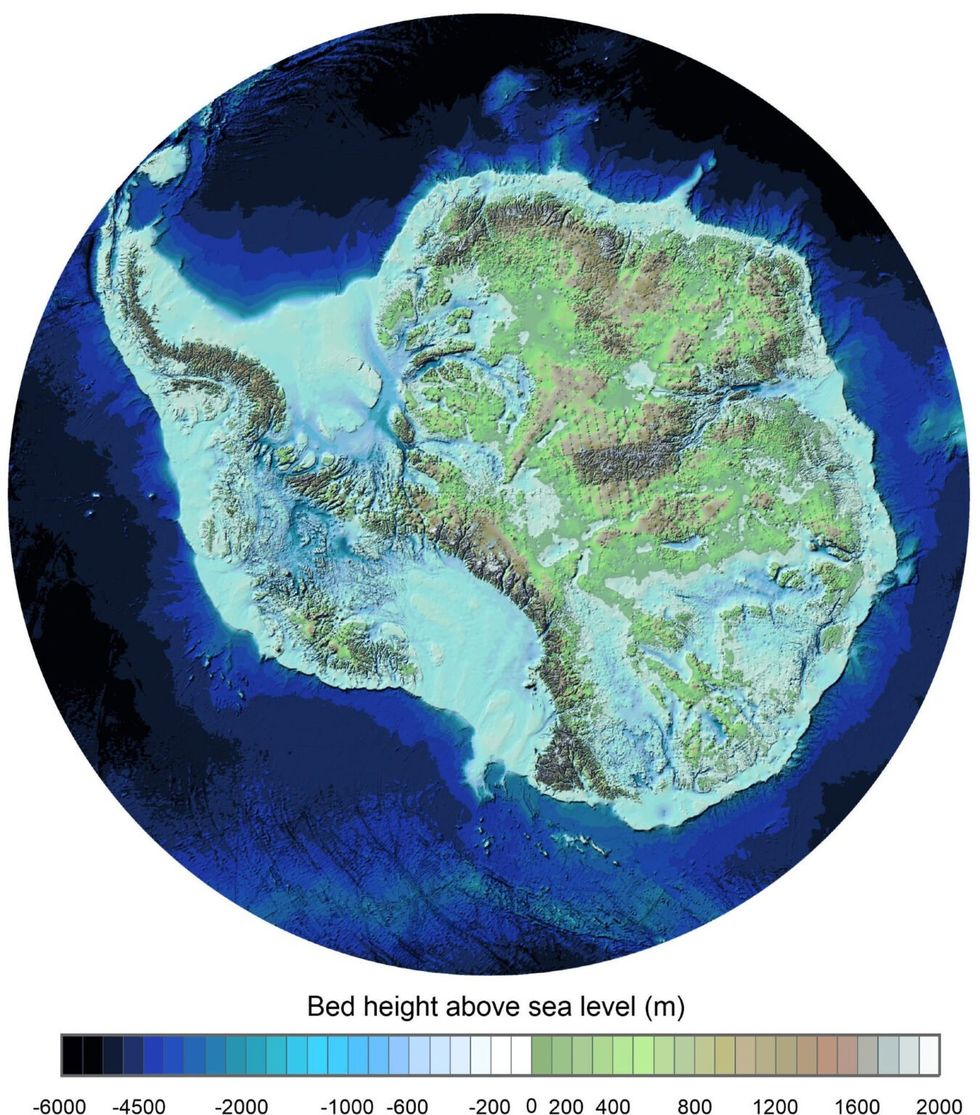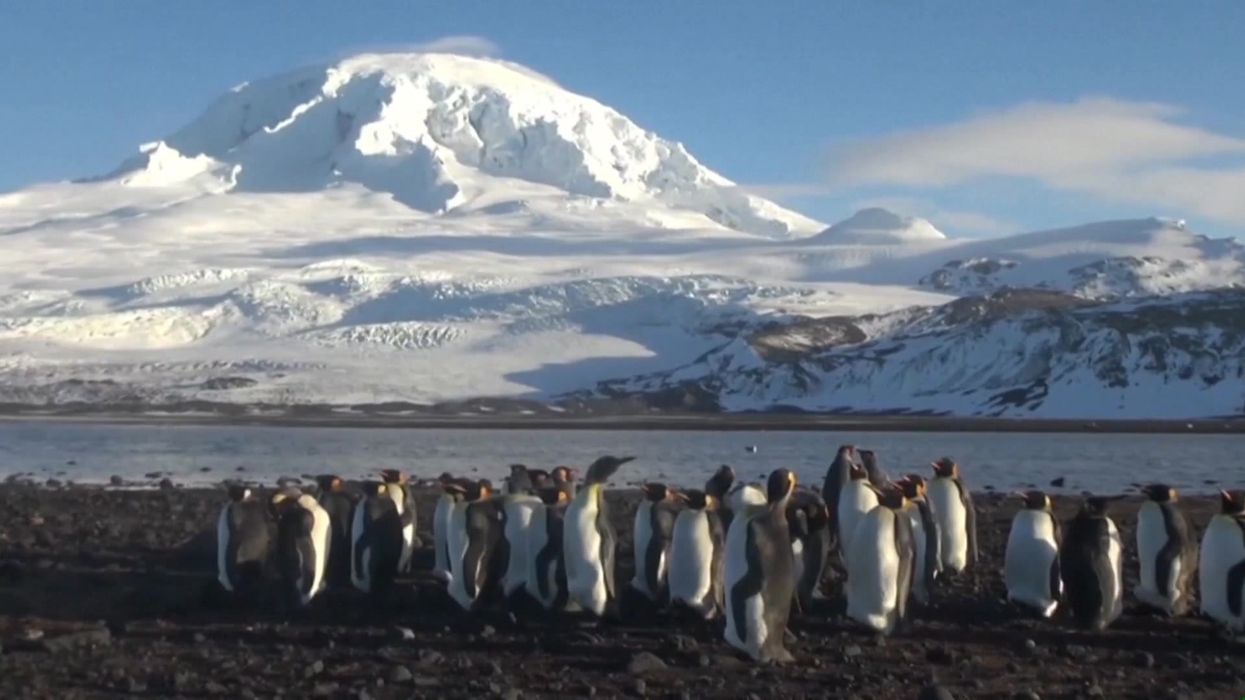Ellie Abraham
May 27, 2025
See the uninhabited island near Antarctica that Trump imposed 10% tariffs on
Michael Dillon Films
Despite its overwhelmingly icy appearance, Antarctica is actually a solid continent of rocky mountains and now experts know what it looks like “naked” under its huge ice sheet.
Unlike the Arctic, beneath a thick icy layer in Antarctica sits a solid continental mass of terrain that includes mountains and even volcanoes.
The world has been hidden under a frozen ice sheet an average of 2,148 meters (7,047 feet) thick. But now, a group of international scientists, led by the British Antarctic Survey (BAS), have created a groundbreaking map and study revealing what lies beneath in stunning detail.
The result is Bedmap3 – a map which was made using 60 year’s worth of data gathered by satellites, ships, planes and even sleds pulled by dogs.
Mapping the topography of the bedrock involved a number of imaging techniques, which include radar, gravity measurements and seismic reflection.
In total, more than 82 million individual data points were used to construct the map, which was rendered on a 500-meter (1,640-foot) grid spacing.
Bedmap3 was the third attempt to map the bedrock under the Antarctic ice, and uses more than double the number of data points used in the previous iteration.
As a result, Bedmap3 reveals what lies beneath in much greater detail and shows the deep valleys and mountains that would otherwise not be visible.

Crucially, the map explores the otherwise remote and harsh East Antarctica region of the continent – one of its least explored parts due to it being largely inaccessible to humans.
It is hoped the map will be used to understand how the ice sheet and meltwater may behave as global temperatures continue to rise.
“This is the fundamental information that underpins the computer models we use to investigate how the ice will flow across the continent as temperatures rise. Imagine pouring syrup over a rock cake – all the lumps, all the bumps, will determine where the syrup goes and how fast.
“And so it is with Antarctica: some ridges will hold up the flowing ice; the hollows and smooth bits are where that ice could accelerate,” Dr Hamish Pritchard, a glaciologist at BAS and lead author on the study, explained in a statement.
Why not read…
Camera dropped down 350-foot Antarctica hole makes extraordinary discovery
Massive ocean discovered beneath the Earth's crust containing more water than on the surface
Watch as volcano in Hawaii erupts for fifth month in a row and sends lava 1000ft in the air
How to join the indy100's free WhatsApp channel
Sign up to our free indy100 weekly newsletter
Have your say in our news democracy. Click the upvote icon
Top 100
The Conversation (0)














